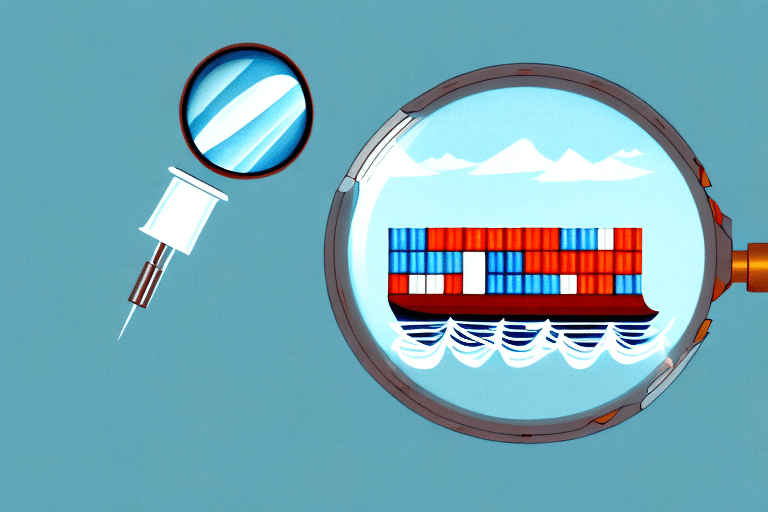What Is Shipping Insurance?
Shipping insurance is a form of protection that safeguards your packages or goods during transit. Whether you are sending a small parcel or a large shipment, shipping insurance acts as a safety net against damage, loss, or theft. This coverage typically applies to various shipping methods, including air, sea, rail, and ground transportation.
Why You Need Shipping Insurance
Shipping insurance is crucial for individuals and businesses that frequently send goods, whether domestically or internationally. Despite the best efforts of shipping companies to ensure safe and timely delivery, accidents can still occur. Instances of damage, theft, or loss during the shipping process can result in significant financial losses.
Having shipping insurance provides peace of mind, ensuring that your packages are protected throughout their journey. It can also save you time and money by covering the costs associated with damaged or lost goods.
Moreover, shipping insurance can help prevent disputes with customers. If a package is lost or damaged, customers may hold you accountable and request refunds or replacements. With shipping insurance, you can efficiently resolve such issues by filing a claim and receiving compensation for the affected items.
Additionally, some shipping carriers may mandate the purchase of insurance for certain types of items, such as high-value or fragile goods. Failing to comply could result in the carrier refusing to ship your package or denying claims for any damages or losses.
Types of Shipping Insurance
There are several types of shipping insurance available, each catering to different needs based on the value and nature of your goods. The most common types include:
- Declared Value Coverage: Provided by carriers, this coverage protects against damage, loss, or theft during transit based on the declared value of your package. However, it may only cover the declared value, which could be lower than the actual value of your goods.
- All-Risk Coverage: This comprehensive insurance covers your package against all types of physical loss or damage unless explicitly excluded by the policy. It offers more extensive protection than declared value coverage but may come at a higher cost.
- Third-Party Coverage: Offered by independent insurance providers, this coverage often provides more extensive protection than carrier-provided insurance. It is typically more expensive but essential for high-value shipments.
Some carriers also offer specialized insurance options, such as temperature-controlled shipping insurance for perishable goods or international shipping insurance for cross-border shipments. It is crucial to review the terms and conditions of any insurance policy to ensure it meets your specific requirements and adequately protects your goods.
Proper packaging and labeling are vital to minimizing the risk of damage or loss during transit. Use sturdy packaging materials, secure and cushion your goods appropriately, and clearly label your packages with accurate shipping information and handling instructions.
Cost of Shipping Insurance
The cost of shipping insurance varies based on several factors, including the value of your goods, the type of coverage you choose, the destination, and the shipping method. Generally, carrier-provided insurance is more affordable than third-party options, but it may offer limited coverage.
To find the best coverage at a reasonable price, compare different insurance providers and their policies. Some carriers offer insurance as an add-on service at a fixed rate, while others charge a percentage of the declared value of your goods.
Be aware that certain carriers may impose restrictions on insuring specific items, such as fragile or perishable goods. Always confirm with your carrier or insurance provider to ensure your items are eligible for coverage.
Choosing the Best Shipping Insurance Provider
Selecting the right shipping insurance provider involves evaluating several factors:
- Coverage Type and Level: Ensure the provider offers the type of coverage that matches your needs.
- Reputation and Reliability: Choose a provider with a strong reputation for reliability and customer satisfaction.
- Cost of Coverage: Compare pricing to find a policy that fits your budget while providing adequate protection.
- Claims Process: Opt for a provider with an easy and efficient claims filing process.
- Coverage Flexibility: Look for providers that offer flexible coverage options to accommodate different shipping needs.
Thoroughly read and understand the policy terms and conditions before purchasing insurance. Seek providers that offer comprehensive coverage at competitive prices and have a proven track record in handling claims effectively.
Additionally, consider the range of shipping options the provider covers. Some insurance companies may limit coverage to specific types of shipments or destinations, so ensure the provider can meet all your shipping requirements.
Customer support is another critical factor. Choose a provider that offers responsive and helpful customer service to assist you swiftly in the event of a claim or if you have questions about your coverage.
Understanding Shipping Insurance Policies
When purchasing shipping insurance, it is essential to thoroughly read and comprehend the policy's fine print. Pay close attention to exclusions and limitations to avoid unexpected expenses. Some policies may exclude certain types of goods or restrict coverage based on the shipment's destination.
Don't hesitate to ask questions and seek clarification from the insurance provider before finalizing your purchase. If necessary, consult a legal professional to ensure you fully understand the policy's terms and conditions.
Shipping insurance policies can vary in their levels of coverage. Some may only cover the item's cost, while others may also cover shipping fees and associated expenses. Evaluate your specific needs and budget to select a policy that offers the appropriate level of protection.
Filing Successful Shipping Insurance Claims
If you need to file a shipping insurance claim, follow these steps to increase your chances of a successful outcome:
- Document the Goods: Record the condition of the goods before shipment with photos or videos.
- Provide Detailed Information: Include comprehensive details about the goods and their value when filing the claim.
- File Promptly: Submit the claim as soon as you discover the loss or damage.
- Submit Necessary Documentation: Provide all required documents and evidence to support your claim.
- Collaborate with the Provider: Cooperate fully with the insurance provider to facilitate a swift resolution.
Understand the claims process and the expected timeline for resolution. Remain patient yet persistent, regularly following up with the insurance provider to ensure your claim is progressing appropriately.
Choosing the right insurance provider is also vital. Select a provider known for handling claims fairly and efficiently. Read reviews and seek recommendations from other businesses in your industry. Additionally, ensure you understand your policy's terms and conditions to avoid surprises during the claims process.
Alternatives to Shipping Insurance: Is Self-Insuring a Good Idea?
Self-insuring is an alternative to purchasing shipping insurance, where you assume the risk of loss or damage during transit and set aside funds to cover potential losses. While this approach might be suitable for low-value goods, it is often impractical for high-value shipments.
Self-insuring can be risky, as losses can accumulate quickly, leading to financial strain. Moreover, managing self-insurance can be challenging and may not offer the same level of protection as traditional shipping insurance.
Understanding Carrier Liability vs. Shipping Insurance
Carriers are generally liable for lost or damaged goods during transit, but their liability is often limited and may not cover the full value of your goods. Shipping insurance provides additional protection, ensuring that you are adequately compensated for valuable or fragile items.
The Benefits of Using a Third-Party Insurer for Your Shipping Needs
Third-party insurers offer several advantages for your shipping needs:
- Comprehensive Coverage: Third-party insurers often provide more extensive coverage options tailored to specific shipping requirements.
- Expert Support: They can offer additional support and guidance when filing claims, ensuring a smoother process.
- Flexible Terms: Third-party providers may offer more flexible terms and conditions compared to carrier-provided insurance.
- Cost Savings: By handling multiple shipments, third-party insurers can offer discounts for bulk coverage, saving you money.
Utilizing a third-party insurer can streamline your shipping operations and provide enhanced protection for your goods.
Top Mistakes to Avoid When Buying Shipping Insurance
To ensure you have adequate coverage and protection during the shipping process, avoid the following common mistakes:
- Relying Solely on Carrier-Provided Insurance: Carrier insurance may not offer sufficient coverage for all types of goods.
- Not Understanding Policy Terms: Failing to read or comprehend the policy's terms and conditions can lead to unexpected gaps in coverage.
- Choosing Based Only on Cost: Opting for the cheapest insurance option without considering the level of coverage can leave you vulnerable.
- Underestimating the Value of Goods: Accurately declaring the value of your goods ensures you receive appropriate compensation if something goes wrong.
- Neglecting Documentation: Providing inadequate documentation and evidence to support your claim can result in denied claims.
By avoiding these mistakes, you can secure the right shipping insurance to protect your goods effectively.






















